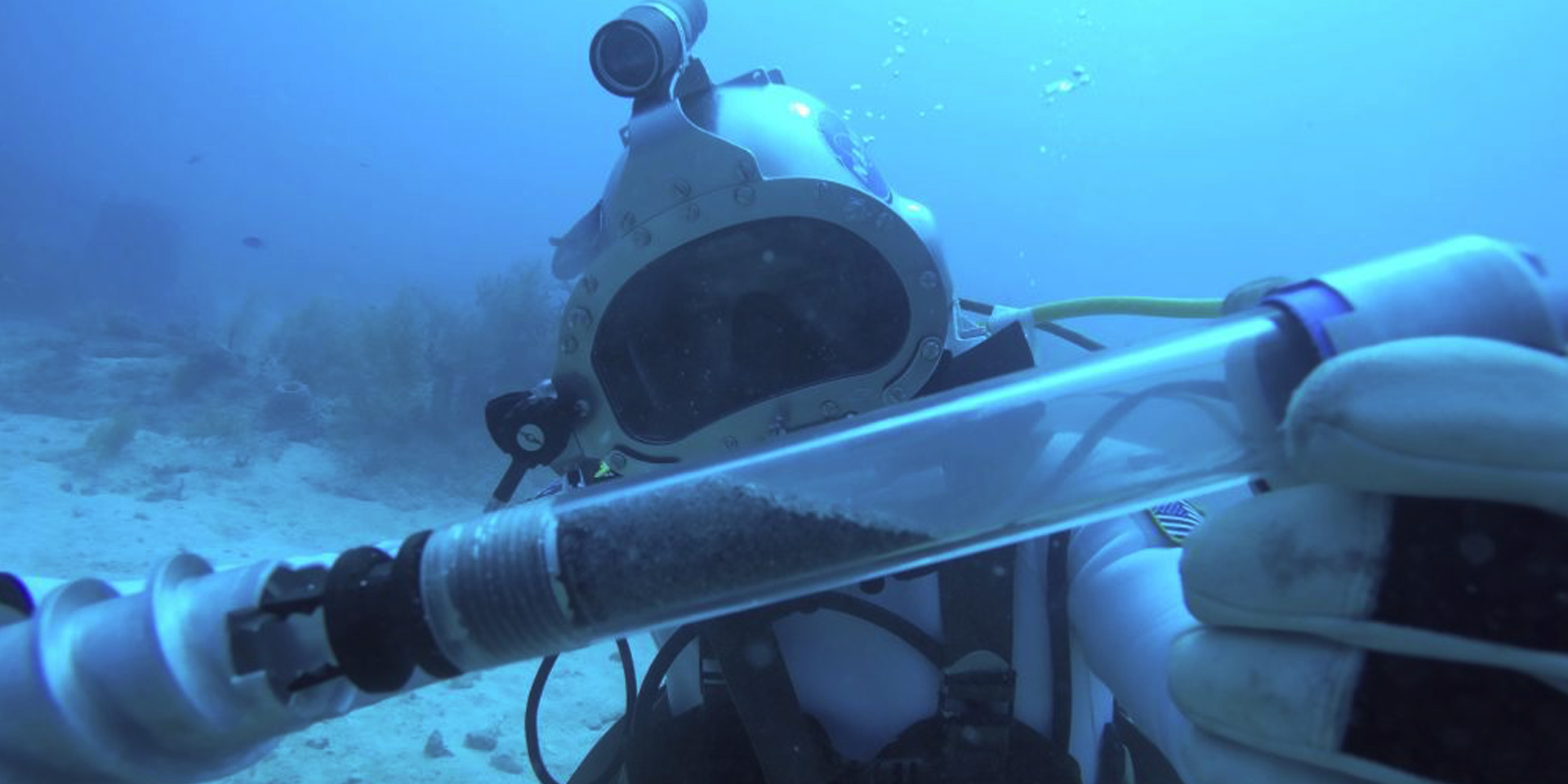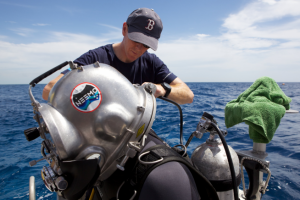
HAB.E | Why Under Water?
How is space like living under the sea?
You already know that the science lock is set up like a mission control center. By doing this, the aquanauts can be monitored as they perform the analogue missions, such as performing maintenance, using tools, and even taking samples from the sea floor and the coral reef that surrounds the Hab. Each aquanaut is equipped with a very high tech diving helmet that not only contains breathing equipment, but also is mounted with cameras and communication equipment so that the aquanaut can communicate directly with mission control in the Hab, in the same way an astronaut working in space communicates with Mission Control on Earth.
Now, you might wonder right away how it helps to train under the sea for these missions – it’s not like astronauts are going to be doing much swimming on the ISS, much less the moon or Mars. One of the reasons it’s so useful is a property called “neutral buoyancy.”
Low Gravity
Remember the different gravity levels that astronauts need to deal with? Aquanauts on the Hab, working in the depths right outside the facility, can simulate those differences by adding or removing weight in order to change their buoyancy, which helps them to learn how to walk, move, and use tools and equipment in any gravitational conditions. A coral reef, with simulated one-third earth gravity is the perfect location to train for these kinds of missions.
Some of the most important missions astronauts will perform once they get to Mars will be geological. They’ll collect rock samples and conduct experiments on those samples to try to understand the history of Mars and whether or not there was ever life there, or even if there is microbial life even now! They’ll also investigate why Mars went from probably having open water and an atmosphere, to being a desolate, frozen desert planet. Being able to work efficiently in the environments they’ll encounter in space is crucial to the success of space missions, and training underwater gives the Aquanaut the practice he or she needs to be ready for the work they’ll do in space. 
Realism
But the biggest reason for training on the Hab doesn’t have anything to do with gravity. There are other ways to simulate low gravity situations: a swimming pool, the infamous Vomit Comet airplane, and the rooms with the fans powerful enough to lift you off the ground as if you were flying. But all of these options lack one thing–the inability to easily escape to a safe place.
If something goes wrong on the ISS, it’s not like you can just waltz back to Earth. The same is true of the Hab. There is no ready way to leave that environment. Being in an environment on Earth that is impossible to escape from easily, in the event of an emergency, is much more effective when training for the extreme environs of space. You’re stuck there no matter what, so of course caution is the top priority, but being able to function and respond correctly in the event of an emergency is incredibly important for each astronaut that goes into space.
Of course, one of the aspects of training in the ocean is very different from working on Mars: there are far fewer sharks on Mars. Yes, the aquanauts have to be aware of the sharks that cruise around the Hab, looking to snack on all the lionfish that have started invading the nearby coral reef.
The working conditions in outer space aren’t the easiest to work in. By getting used to things like time lag for communications and different gravity, as well as practicing how to use their equipment, the training that the aquanauts get could be the difference between life and death.
Curriculum Reference Links
- Chemical World / Systems and Interactions / 7: Students should be able to investigate the effect of a number of variables on the rate of chemical reactions including the production
- Physical World / Systems and Interaction / 3: Students should be able to investigate patterns and relationships between physical observables




